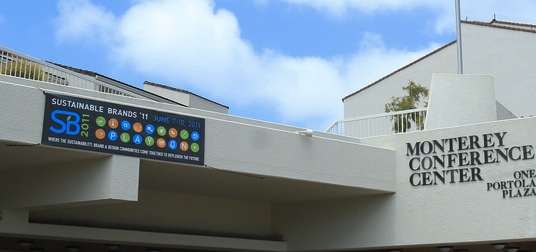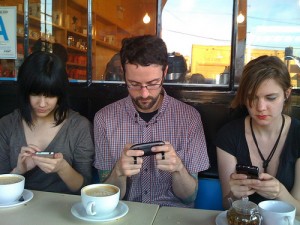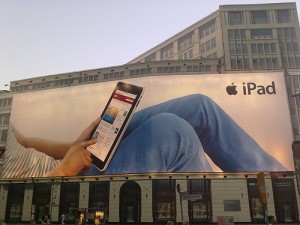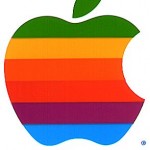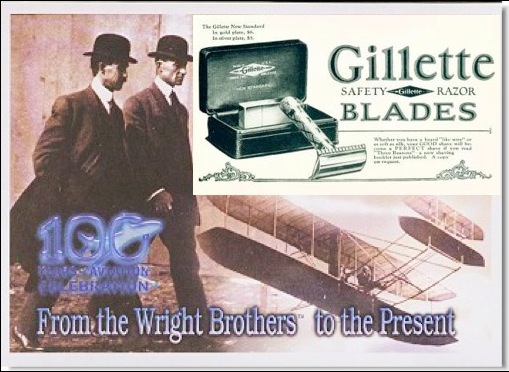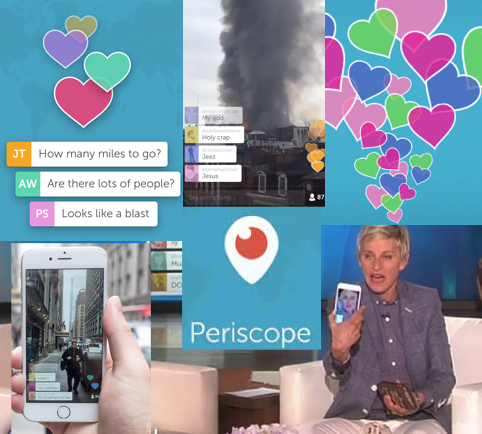 The last time I witnessed a major technological “game changer†was when Twitter started to gain popularity in 2008/9. Although launched in mid-2006, it was not until the iPhone launched in June 2007 when Twitter and social media truly started to expand with the marriage of these two technologies. Essentially, social media and smart phones changed human communication forever. Now, Periscope and Meerkat have arrived, and the next revolution in human communication is upon us. What does this mean for human communication? How will live events be covered? How will Periscope affect commerce and politics? It may be too early to tell, but so far, a few answers are beginning to emerge.
The last time I witnessed a major technological “game changer†was when Twitter started to gain popularity in 2008/9. Although launched in mid-2006, it was not until the iPhone launched in June 2007 when Twitter and social media truly started to expand with the marriage of these two technologies. Essentially, social media and smart phones changed human communication forever. Now, Periscope and Meerkat have arrived, and the next revolution in human communication is upon us. What does this mean for human communication? How will live events be covered? How will Periscope affect commerce and politics? It may be too early to tell, but so far, a few answers are beginning to emerge.
The Launch of Periscope and a New Social Media Landscape
This past weekend I viewed Periscope for the first time. The Periscope app was launched by the Twitter folks at the end of March 2015 and now, two months later, it is safe to say the art of “Periscoping†has taken off.
What to see on Periscope
Over the course of three days, I was able to parachute into people’s everyday lives. Admittedly, most of the live video feed is quite inane. In fact, many people’s headlines, or titles, list their video feeds as “boring,†“chillin’ out,†or things like, “driving around†and many, many more. Periscope video feeds are “slices of life” in real-time that reflect the diversity of language, culture and ordinary human experience across the globe. Ordinary people now have, as an invited “flies-on-the-wall,†the ability to peek in and interact with an enormous range of daily and nightly events. Viewers become “voyeurs†and posters are “narcissists†that communicate through voice-to-text communication (and hearts) for minutes at a time (or longer).
A Fly on the Wall and/or an Engaged Participant?
I joined a poster’s late-night journey on a tram as it wended its way down the streets of Melbourne, Australia followed by merry people drinking in bars in Dublin, Manchester, and Edinburgh. I also found myself on the back of a bike rolling through the streets of Amsterdam and then in the back of a truck speeding down the autobahn in Germany. There were also plenty of people driving and “Periscoping” – which is scary when you can see the driver trying to read comments while driving. Yikes!
I had a conversation about Fitbit’s and exercise with a woman while she sat in a CVS parking lot waiting for her husband in Grand Rapids, Michigan. I also watched a group of Periscope non-believers conducting a rapid-fire Q&A session with a religious preacher who could barely keep up with the assault on his faith. There were also several posts by Middle-Eastern males all gathered around their phones speaking in Arabic about who knows what. Not surprisingly, there were no Middle Eastern women that I could find using Periscope.
Spanning the Banal and Inane to Events and Disasters – Viewers see the world as it happens

Concerts and events are now shown live – and that expectation is now permanent.
All of these ordinary human activities are similar to what appeared in the early days of Twitter only now with video; the experience is far more immersive and revealing. Like Twitter, the content spans the complete inane to fun, to covering disasters, riots, events and mass spectacles.
For example, I saw a woman showing the live footage of a house engulfed in flames in her neighborhood somewhere in southern California. There were also many live streams of the storms and flooding across Texas, Arkansas, Oklahoma and Iowa. In Cleveland, there was a demonstration by African Americans who were upset with a recent court decision finding a police officer not guilty of shooting a black person. What saddened me about this footage was reading the vitriol in the viewer comments. Most of the nasty comments directed toward the protesters were ignorant, racist and bigoted while some observers expressed their utter disgust with the comments they were witnessing.
It is also apparent that people love to Periscope big events. I saw live Memorial Day bands and plenty of live concert footage including U2 in LA, The Rolling Stones in San Diego, Lady GaGa in Vancouver and Rush performing in Tampa. Oddly enough, only moments later, I saw the Tampa Bay Lightning playing the New York Rangers live from a balcony seat in Madison Square Garden.
News Anchors seeking the endless spotlight
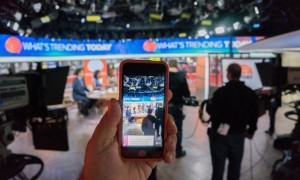
Periscope is being used by newscasters to speak directly with their viewers.
There were also several reporters and news anchors happily conversing with viewers on Periscope prior to going on-air and during commercial breaks. This suggests we now have the ability to converse directly with newscasters and influence the stories as never before.
Seeing people from around the world doing a variety of activities is both interesting and strange at the same time. NPR recently reported on Periscope and the rise of obvious privacy issues. Not surprisingly, the NPR reporter discovered that most everyone she spoke with was not “freaked out†by Periscope because, according to Periscope CEO and co-founder Kayvon Beykpour, “people are already used to cameras being just about everywhere.†Only now we can expect that any camera pointed in our direction is live streaming to people everywhere who are making comments about everything we do.
Troubling Occurrences that are Scary
I also witnessed disturbing events such as little kids not knowing how to respond to the inappropriate comments (by adult males). Perhaps weirdest and creepiest of all was a guy sitting in his car at a McDonald’s parking lot. He was wondering out loud how to approach a woman in the restaurant for a “date†with whom he had briefly exchanged glances with earlier. There was a surreal moment where the viewers were both freaked out by what they were witnessing while also adding comments about him getting his ass kicked, and him being a stocker and more. It was in effect, a bizarre, awkward and potentially dangerous situation being played out in real time where the poster was describing his plan while asking the viewers for advice. Eventually, the woman came outside, got into her car and drove off while the guy watched and did nothing. It is these kinds of tense situations where people are about to “do†something or confront someone while live streaming the whole incident which makes Periscope an entirely new kind of social media.
Rubbernecker’s Paradise
Today, people who were once only rubbernecker’s passing by the scene of an accident, now have the opportunity to witness and interact with all kinds of human and natural events. Only now, they can even participate and play a small role in the outcome with their comments. These situations are not new – but the difference now is that everyone with a smartphone can experience their own Truman Show while communicating with strangers. What direction will this new kind of interaction take society?
There is no telling what kind of “extreme†situations that people find themselves in may now be streamed live. For instance, someone contemplating suicide or a person about to commit an act of revenge can Periscope the whole event. Alternatively, will people facing doom in a burning building share their horror? Will victims of war-torn countries show the brutalities of war? At what point will the overseer’s at Periscope cancel the feed? Although Periscope’s software is programmed to remove porn and other inappropriate material, will it have the ability to make decisions on what is deemed offensive, dangerous and/or criminal? What can (or should) viewers do if a situation escalates into an emergency? Only time will tell – but the moment Periscope has its “mass-media moment†during some big crisis or event is probably not far off.
The Mechanics of Periscope
As for the set up of Periscope, the feed appears entirely random. At the moment, the list of headlines to choose from is confusing as it contains all languages and titles in no particular order. I suspect that as the Periscope audience grows the app will include categories for people to choose their language(s), locations and the kinds of activities or “non-activities†they wish to participate or view. There are many Periscope “stars” emerging who constantly beg for hearts and plead viewers to “swipe left and follow” them and their every move. The idea of following random people and celebrities sounds exhausting for the viewer who is sent updates whenever the people they follow are live. Too much clutter and bother!
Corporate Invasion
It will also be interesting to see how the corporate world will interact with Periscope and what promotions work and what mistakes they are sure to make (like they have done so many times on Twitter). Soon, I suspect there will be live promotions and other live “behind-the-scenes†video footage that will entice viewers to take immediate action. The businesses that create the right promotion or find ways to use  Periscope strategically will probably benefit immensely. However, as is common with all social media channels, there are pitfalls that can threaten corporate reputations.
Similar to the Twitter battles that erupt when irate consumers express their dissatisfaction with a business through tweets, there may now be live feeds showing a customer’s grievance in real time. As a result, everyone in the service industry is now open to scrutiny via live streaming video. Waiters, baristas, ticket agents, cab drivers and even celebrities all now have to contend with live accounts of their actions.
Political Fall Out
Finally, the political world will soon be dealing with 24/7 live streaming. The gaffs and embarrassing moments that politicians have suffered due to social media will now be live and contain user comments (or hearts) from friends and foe alike. The 2016 presidential candidates will be exposed to numerous voyeurs while simultaneously they can be narcissists supplying a video feed of themselves “chillin†behind-the-scenes on their campaign buses or jets.
 The Future is Here and you can see it live 24/7
Make no mistake about it; Periscope and its cousin, Meerkat, are changing social media like never before. I suspect Facebook will enter the fray soon, and no doubt, Instagram, Snapchat and Vine change the way they operate as well. Keep an eye out on those smart phones looking your way!








